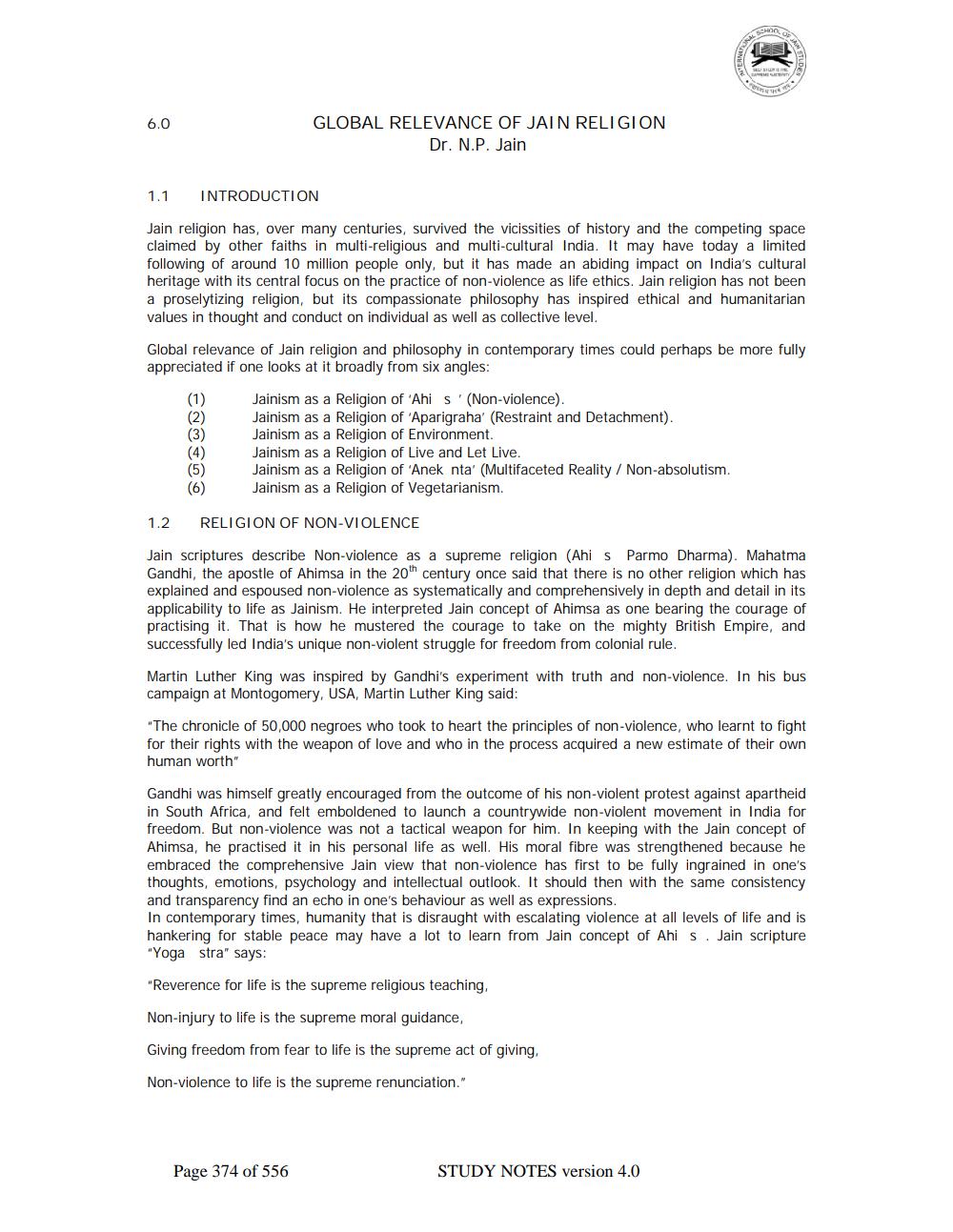________________
6.0
1.1
INTRODUCTION
Jain religion has, over many centuries, survived the vicissities of history and the competing space claimed by other faiths in multi-religious and multi-cultural India. It may have today a limited following of around 10 million people only, but it has made an abiding impact on India's cultural heritage with its central focus on the practice of non-violence as life ethics. Jain religion has not been a proselytizing religion, but its compassionate philosophy has inspired ethical and humanitarian values in thought and conduct on individual as well as collective level.
GLOBAL RELEVANCE OF JAIN RELIGION Dr. N.P. Jain
Global relevance of Jain religion and philosophy in contemporary times could perhaps be more fully appreciated if one looks at it broadly from six angles:
(1) (2)
1.2
Jainism as a Religion of 'Ahi s' (Non-violence).
Jainism as a Religion of 'Aparigraha' (Restraint and Detachment).
Jainism as a Religion of Environment.
Jainism as a Religion of Live and Let Live.
Jainism as a Religion of 'Anek nta' (Multifaceted Reality / Non-absolutism.
Jainism as a Religion of Vegetarianism.
VERSAC
RELIGION OF NON-VIOLENCE
Jain scriptures describe Non-violence as a supreme religion (Ahi s Parmo Dharma). Mahatma Gandhi, the apostle of Ahimsa in the 20th century once said that there is no other religion which has explained and espoused non-violence as systematically and comprehensively in depth and detail in its applicability to life as Jainism. He interpreted Jain concept of Ahimsa as one bearing the courage of practising it. That is how he mustered the courage to take on the mighty British Empire, and successfully led India's unique non-violent struggle for freedom from colonial rule.
Martin Luther King was inspired by Gandhi's experiment with truth and non-violence. In his bus campaign at Montogomery, USA, Martin Luther King said:
"The chronicle of 50,000 negroes who took to heart the principles of non-violence, who learnt to fight for their rights with the weapon of love and who in the process acquired a new estimate of their own human worth"
Page 374 of 556
Gandhi was himself greatly encouraged from the outcome of his non-violent protest against apartheid in South Africa, and felt emboldened to launch a countrywide non-violent movement in India for freedom. But non-violence was not a tactical weapon for him. In keeping with the Jain concept of Ahimsa, he practised it in his personal life as well. His moral fibre was strengthened because he embraced the comprehensive Jain view that non-violence has first to be fully ingrained in one's thoughts, emotions, psychology and intellectual outlook. It should then with the same consistency and transparency find an echo in one's behaviour as well as expressions.
In contemporary times, humanity that is disraught with escalating violence at all levels of life and is hankering for stable peace may have a lot to learn from Jain concept of Ahi s. Jain scripture "Yoga stra" says:
"Reverence for life is the supreme religious teaching,
Non-injury to life is the supreme moral guidance,
Giving freedom from fear to life is the supreme act of giving,
Non-violence to life is the supreme renunciation."
STUDY NOTES version 4.0




